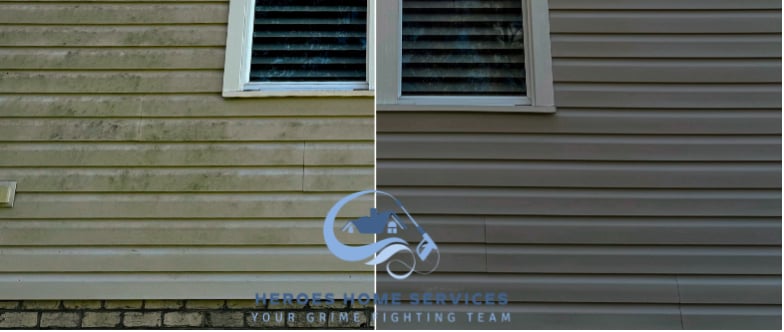Soft Washing vs. Pressure Washing: Which One Do You Need?
When it comes to cleaning the exterior of your home, you may have heard of both soft washing and pressure washing. While both methods are effective, they serve different purposes and are best suited for specific surfaces. Understanding the differences can help you choose the right cleaning method for your property.
David Hahl
3/19/20252 min read


Keeping your home’s exterior clean is essential for maintaining its appearance and longevity. When it comes to removing dirt, mold, and grime, two common cleaning methods stand out: soft washing and pressure washing. While both are effective, they serve different purposes and are best suited for specific surfaces. Understanding the differences between these methods can help you choose the right one for your property.
What Is Pressure Washing?
Pressure washing uses high-pressure water to remove dirt, stains, and buildup from hard surfaces. The force of the water, which can reach up to 4,000 PSI (pounds per square inch), makes it highly effective for deep cleaning. However, it must be used carefully to avoid damage.
Best Uses for Pressure Washing:
Driveways and sidewalks – Removes oil stains, dirt, and tire marks.
Brick and concrete surfaces – Cleans deep-set grime, mildew, and algae.
Decks and patios – Strips away dirt, algae, and old paint layers.
Fencing – Eliminates mold, mildew, and weather-related buildup.
Advantages of Pressure Washing:
Quickly removes tough stains and heavy grime.
Works well on durable surfaces like concrete and stone.
Enhances the curb appeal of outdoor areas.
Potential Risks of Pressure Washing:
High pressure can damage softer materials such as wood, vinyl, and painted surfaces.
Misuse can cause injury or property damage if not handled correctly.
Can lead to water intrusion in homes if used improperly.
What Is Soft Washing?
Soft washing uses low-pressure water combined with specialized cleaning solutions to break down and remove contaminants like mold, algae, and dirt. Unlike pressure washing, soft washing relies on chemical agents rather than force, making it a gentler yet highly effective cleaning method.
Best Uses for Soft Washing:
House siding (vinyl, stucco, wood) – Safely removes mold, algae, and dirt without causing damage.
Roof shingles – Cleans algae and extends the lifespan of roofing materials.
Windows – Gently washes away dirt and water stains.
Painted and delicate surfaces – Protects against chipping or peeling.
Advantages of Soft Washing:
Safer for fragile surfaces that could be damaged by high-pressure water.
Effectively removes organic growth like mold and algae at the root, preventing regrowth.
Uses eco-friendly cleaning solutions that are safe for plants and pets.
Potential Considerations for Soft Washing:
May take longer to see full results compared to pressure washing.
Less effective for removing deep stains on hard surfaces like driveways.
Requires specialized cleaning solutions, which may need careful application.
Choosing the Right Cleaning Method
The best cleaning method depends on the surface and type of buildup you need to remove.
Use Pressure Washing for hard surfaces like driveways, sidewalks, and heavily stained patios where deep cleaning power is necessary.
Use Soft Washing for delicate surfaces such as roofs, siding, and painted areas where high-pressure water could cause damage.
Conclusion
Both pressure washing and soft washing play crucial roles in maintaining a home’s exterior. Choosing the right method depends on the type of surface and the level of cleaning required. Understanding their differences ensures that your home stays clean and protected without unintended damage. Whether tackling a DIY project or consulting a professional, using the appropriate cleaning approach will help preserve your property’s appearance and integrity over time.
